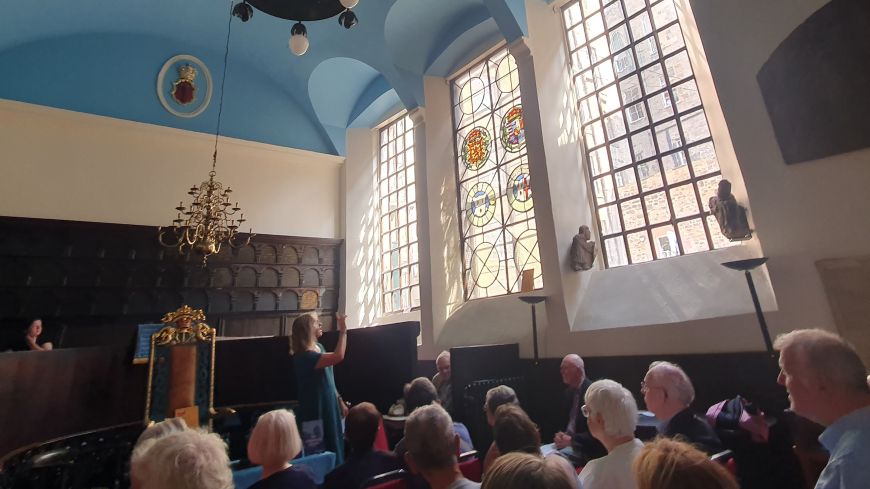
The Magdalen Chapel is one of Edinburgh’s hidden gems. Nestled away, yet in the midst of the Cowgate, it is easy to miss this building – though it embodies such a tremendous wealth of history and heritage.
The lecture this afternoon lasted just over an hour. Alan McCulloch (Vice-Chair of the Reformation Society) introduced the talk. We learned that, founded in 1541, the Chapel held its origins in the desire to alleviate destitution, sickness and infirmity within the neighbourhood. So it was intended to serve not only as a chapel, but also as a hospital, and its continuing work down the generations testifies to this vision.
The building somewhat escaped the full consequences of the Reformation – its stained glass not featuring images of Jesus or the Saints meant that it was spared the iconoclasm of the time, and a persisting social vision (particularly regarding the importance of the education of youth) ensured it remained. Not far from the showy Greyfriars – demolished in 1560 – Magdalen’s unostentatious exterior set it in contrast.
The patronage of the Chapel, given to the Hammermen (those working with metal) is still evidenced through the impressive memorials in the building today. But the fortunes of the Hammermen increasingly waned – the impact of the building of the New Town of Edinburgh meant fewer people joining the trade, and financial support had near faded entirely by the mid C19; the Chapel then passed into the care of the Protestant Institute.
Carol Richardson, Professor of Art History at the University of Edinburgh, emphasised the point about us being sat in what was originally an infirmary, and that underlying theme about the care of the area’s poorest. At the other end of the spectrum, yet integral to the Chapel’s work, was a priority to look after men in their older years: a Chaplain was employed for their pastoral care.
As an interlude, we heard three psalms – beautifully sung – coming from the Geneva Psalter: so likely to have been sung here in previous times. We were momentarily transported back to some of the earlier worship which would have been the staple when the Chapel was active.
Peter Burman, Director of Preservation from the National Trust of Scotland, gave some further touching perspectives – from the beautiful herbal and healing garden within the curtilage, to the impressive Tower and steeple that can be seen from the George IV bridge. More has been learned about the Chapel from engravings and drawings which have gradually come to light.
The talk was packed with lots of dense information – clearly those who came specifically, and this event definitely met a certain curiosity and interest.
The lecture finished at 4.15pm.
Exploring Sacred Space, Thursday 14th August 2025, Magdalen Chapel

